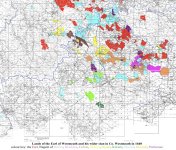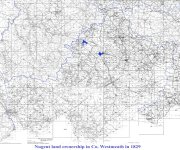- Joined
- Sep 11, 2021
- Messages
- 1,160
- Reaction score
- 1,430
Two campaigns at times dominated discourse in the Imperial Parliament in London in the late 1820s and early 1830s, two attempts at redressing historic wrongs. The first, which was conceded in 1829, was Catholic Emancipation, reversing the terrible oppression of Catholics that had persisted since the Reformation, and the second was conceded in 1833, emancipation for slaves all across the British Empire. The latter did involve compensation to slave owners and in recent years has generated a lot of talk, and some monies, by way of compensation to the descendants of those people for that historic wrong.
So why did they not, to any degree, compensate the former? To a huge extent the lands and buildings of Ireland were stolen from Catholics and handed to Protestants and yet no reversal of that, to any extent at all, ever really happened. Even Dublin is graced with two great historic and traditionally Catholic Cathedrals, St Patrick’s and Christchurch, but these are now Protestant and there is no Catholic one, except a ‘pro’ or ‘provisional’ one.
I guess this is a long time ago, and a bit argumentative, but I respectfully submit the following thesis: If it is too long ago, then why do we have to listen to very serious talk of compensation to former slaves in the British Empire right now in 2025, righting a wrong of approximately 200 years ago? If it is not too long ago, why not take seriously the question of compensation to Catholic who were so systematically deprived of all their possessions in Ireland for being Catholics?
Anyway in case people think that Catholics weren’t deprived of their estates I will point you to the enclosed two maps, the first just before the main anti-Catholic confiscation, the Cromwellian one, and the second showing the picture at the time of Catholic Emancipation in 1829, as it affected the Earl of Westmeath and his wider clan in that county.
by Brian Nugent, http://www.orwellianireland.com
Map Sources
1640: As part of the Cromwellian Plantation, a jury was empanelled to ascertain who owned what lands in Ireland in 1640. This is known as the Civil Survey and it is available, in some shape or form, for:
– Dublin, Robert Christopher Simington, The Civil Survey AD 1654-56, County of Dublin (Dublin, 1945) vol vii;
– Meath, Robert Christopher Simington, The Civil Survey 1654, Co Meath (Dublin 1940) vol v;
– Westmeath, John Charles Lyons, The book of surveys and distribution of the estates in the County of Westmeath (Ladiston, 1852);
– Roscommon, Robert Christopher Simington, Books of Survey and Distribution 1636-1703, Co Roscommon (Dublin, 1949) vol i;
– Cavan and Longford, both counties from the manuscript volumes of the Books of Survey and Distribution among the Quit Rent Office Papers in the National Archives of Ireland, as digitised at virtualtreasury.ie.
1829: When Catholic Emancipation came in in 1829, the government introduced new rules on franchises, the right to vote, and as such a list was compiled for Co. Westmeath of:
“Notices of Applications for Registering Freeholds in the County of Westmeath received by the Clerks of the Peace up to and for the 2nd of May, 1829.”
This therefore provides a pretty comprehensive list of landowners in Co. Westmeath right at the moment of Catholic Emancipation, and in this list only these Nugent names appear:
“Dominick Nugent, Barratogher
John Nugent, do.
Michael Nugent, the twelve acres [and references to Francis Nugent, also of this address, this land is part of the Nugent lands of Russagh, as such that townland is filled in on the map].
...
Walter Nugent, Multyfarnham, lands Rathgany, barony Corkaree, £20 valuation [almost all the rest are £10.]”
(Westmeath Journal 14/5/1829, p.2-3, and ibid 21/5/1829, p.1-3.)
Attachments
Last edited:


